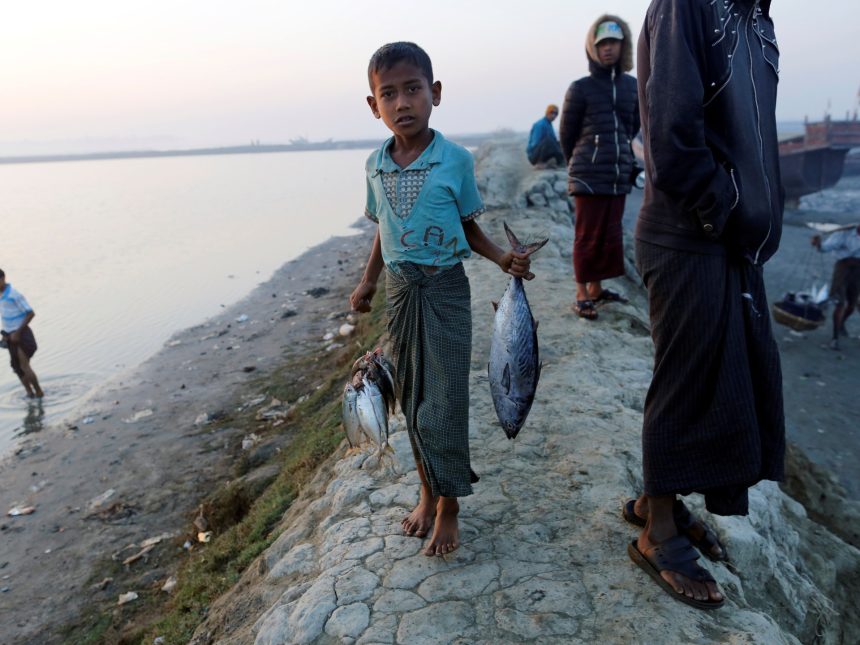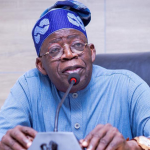I was born in 1986 in a village in Myanmar’s western Rakhine State marked by green farms and cows ploughing the fields.
It was before the military began imposing apartheid-like conditions on the state’s minority Rohingya population.
As a child, I recall my Rakhine peers bullying our Rohingya classmates, but I lacked the political awareness to understand why. And for the most part, the Rohingya and the Rakhine majority to which I belong could still live side by side.
I was raised by a single mother who struggled to support me with her wages as a farm labourer and who sent me to Myanmar’s largest city, Yangon, to live with my uncle when I was 12 years old. At first, I felt lost among the cars, tall buildings and unfamiliar food, but I soon found my place when I joined a youth movement associated with the Aung San Suu Kyi-led National League for Democracy.
Widely popular at the time, the party was also outlawed by the military regime and, in 2001, when I was 15, I was arrested on charges of incitement. I served five years in the country’s notorious Insein Prison before I was released in a prisoner amnesty.
Fearing rearrest, I fled to Chiang Mai, Thailand, where I busied myself with work and studies. I also made friends from different countries, from whom I learned about the human rights violations that the Rohingya had faced under successive military regimes in Myanmar.
I also learned about some of the reasons the Rakhine and the Rohingya had grown apart, including unfounded military propaganda portraying the Rohingya as “illegal immigrants” from Bangladesh who threatened to overtake the country’s majority Buddhist population and establish a Muslim state.
In 2012, I returned to Myanmar to visit friends and relatives in the Rakhine state capital of Sittwe. The military had begun a transition toward semi-civilian rule, but while Western governments celebrated a country on the verge of positive change, my state was on the brink of a crisis.
In early June, weeks after I arrived, riots erupted across the state’s central and northern townships, where most of the Rohingya in Myanmar are concentrated. Rakhine and Rohingya mobs burned each other’s homes and religious buildings and attacked each other’s communities with rudimentary weapons, while smaller minorities were caught in the crossfire.
The riots quietened down a week later but resumed in October; by the time they ceased in November, thousands of buildings lay in ruins, and the death toll stood at more than 80. Both the Rakhine and the Rohingya lost their homes, belongings and loved ones, but the Rohingya also lost their freedom of movement, and in Sittwe, more than 100,000 were forced into camps and a ghetto where they remain to this day. A deep divide had taken hold, and the two communities were not even talking to each other.
I was shocked and distressed, as well as motivated to do something about it. So I decided to dedicate myself to promoting trust, understanding and cohesion in my society and established my own organisation in Sittwe less than a year later.
At the time, my goal seemed about as impossible as demolishing a mountain with the seed of a palm fruit, to use a Burmese saying. People avoided me in the local tea shops, and even my own friends stopped talking to me. My work was also dangerous. A prominent Rakhine politician sent me death threats and Rakhine nationalist groups threatened my teammates as well.
But giving up was never an option. Instead, we started at a basic level – building trust and understanding among ourselves and encouraging our communities to see diversity as a strength. We also brought together local youth through sports, music, art, storytelling and civic education, among other tools.
Just as we were making progress, however, another crisis hit in 2016 when the military began its “clearance operations” against the Rohingya in Rakhine’s northern townships. By the end of 2017, the military had killed more than 6,700 people and driven 720,000 to flee to Bangladesh. Even talking about social harmony and peace was risky. The military also cut off most travel to northern Rakhine, and we had to relocate some of our work.
My state again erupted in violence in 2019, this time between the Myanmar military and the autonomy-seeking Arakan Army, which draws most of its support from ethnic Rakhine. The military’s retaliatory attacks brought immense suffering on Rakhine people but also marked a turning point between Rakhine and Rohingya communities, as they began to come together over shared experiences of oppression.
Then the military seized power in a February 2021 coup. Ever since, civil society organisations, including my own have faced a dramatically tighter civic space in which to operate. Fearing arrest or worse, we have had to self-censor and avoid gathering in large groups.
At the same time, the military’s attacks against people of all ethnic and religious backgrounds have sparked a countrywide awakening to Rohingyas’ plight and an unprecedented coming together in solidarity. Although Rakhine has been spared much of the post-coup turmoil, people have nonetheless suffered from the country’s economic crisis as well as around two months of renewed clashes between the military and Arakan Army.
We’re still a long way away from achieving a truly just, equitable and harmonious society in Rakhine State. Discriminatory policies against the Rohingya remain in place, including restrictions on their movement and access to services.
At the same time, I have seen increasing signs that diverse ethnic communities want to live side by side in peace. Informal trade has gradually resumed between the Rakhine and Rohingya communities, while Rakhines have increasingly hired Rohingyas for manual labour, and some Rohingyas have opened street stalls in Sittwe. Rohingyas are also now informally venturing to the popular Sittwe beach and reconnecting over food and juice with Rakhine friends they hadn’t seen in more than a decade.
Rohingyas working for humanitarian organisations in Sittwe’s camps can visit their offices in town to meet with colleagues, and Rohingya youth can come into town for initiatives offered by civil society organisations, including my own. Although Rohingyas still need military permission to visit public hospitals, they can now informally access private clinics, and in May of 2022, Rohingya students enrolled in Sittwe University for the first time since 2012.
This May, when Cyclone Mocha hit the Rakhine coast, it brought another test to the state’s diverse people.
The real death toll remains unknown due to the limited civic space and access to information in Myanmar, but available estimates indicate that more than 150 people died in the storm, mostly Rohingyas. Communities of all backgrounds also lost homes, farmland and livestock.
In the face of this disaster, even more signs emerged that the Rohingya and Rakhine communities are reestablishing the tattered threads of mutual reliance that had once made up the state’s social fabric.
Although more than two dozen United Nations agencies and international nongovernmental organisations have a presence in Rakhine, they have been unable to respond directly to the cyclone’s devastation because the military has denied humanitarian access to affected areas.
Instead, Rakhines and Rohingyas joined in clearing roads, while many Rakhines hired Rohingyas to help them repair their homes. Rakhine student groups and civil society organisations provided cyclone relief to all ethnic communities. At my own office, my Rakhine, Rohingya and other colleagues came together to clear the debris and fix the damage.
Now, as the longer-term efforts to address lost livelihoods and damaged infrastructure set in, all ethnic communities must proactively work hand in hand to support the most vulnerable and affected – both to strengthen the response and to encourage the fragile progress towards social cohesion. Meanwhile, the international organisations providing funding and technical support must be mindful of this delicate context.
By coming together in this way, I still believe we can demolish a mountain with the seeds of a palm fruit.
This article was written together with Emily Fishbein, a freelance journalist focusing on Myanmar.
The views expressed in this article are the author’s own and do not necessarily reflect Al Jazeera’s editorial stance.









